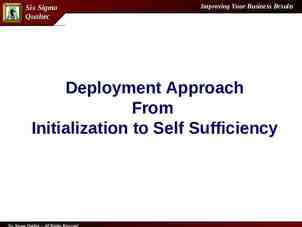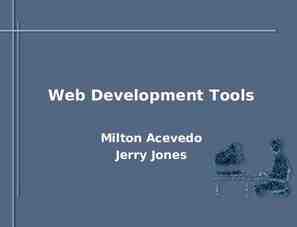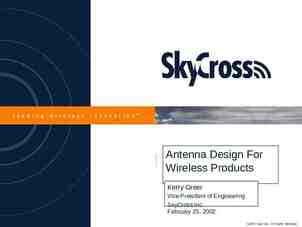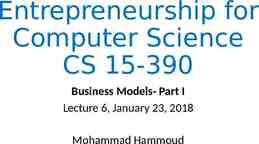RANCHO SANTIAGO COMMUNITY COLLEGE DISTRICT STRATEGIC PLANNING AND
45 Slides9.85 MB

RANCHO SANTIAGO COMMUNITY COLLEGE DISTRICT STRATEGIC PLANNING AND ENROLLMENT MANAGEMENT UPDATE Enrique Perez, James Kennedy, Jeffrey Lamb, and Martin Stringer March 22, 2021 1

TODAY’S AGENDA Review of RSCCD Planning Processes Update on Strategic Planning Activities COVID-19 Impact and Strategies Update on Strategic Enrollment Management 2

RSCCD PLANNING 2013-2023 COMPREHENSIVE MASTER PLAN Adopted May 2013 RSCCD Goals used to DEVELOP OBJECTIVES in RSCCD Strategic Plan THREE STRATEGIC PLANNING CYCLES 2013-2016 2016-2019 20192022 Goals and Objectives aligned to VISION FOR SUCCESS 3

RSCCD BOARD OF TRUSTEES 2018-20 REAFFIRMED COMPLETED Mission Statement Guided Pathways Retreat (November 2018) (January 2019) APPROVED CREATED Guided Pathways Goals (January 2019) Board Institutional Effectiveness Committee (September 2020) 4

RSCCD PARTICIPATORY GOVERNANCE DISTRICT COUNCIL 5

RSCCD STRATEGIC PLANNING 6

RSCCD PLANNING UPDATES COMPLETED Alignment of Goals to VFS (April 2019) COMPLETED 2019-21 District Services Planning Portfolios (July 2019) COMPLETED CREATED COMPLETED UPDATED COMPLETED COMPLETED Districtwide Planning2019-22 Strategic Plan 2016-19 Strategic Plan Retreat (May 2019) (May 2019) Reports (June 2019) Functions/Mapping of Responsibilities (August 2019) 1ST Year Progress 2019-22 Strategic Plan (August 2020) Update Planning Design Manual (March 2021) 7

8

OBJECTIVES GOAL #1 RSCCD will assess the educational needs of the communities served by RSCCD and will adjust instructional programs, offerings, and support services and will allocate resources as needed to optimize the alignment of students’ needs with services and fiscal resources. Optimize Number of Feeder H.S. Students Enrolled at SAC/SCC Number of Local USD to SAC/SCC, 2018-19 vs 2019-20 4% 3% 2% 1% 0% -1% -2% -3% -4% -5% 3% SAUSD to SAC OUSD to SCC -4% The colleges offer many activities/services introducing HS students to college, including early welcome, weekly virtual visits with college staff. 9

OBJECTIVES Sustainable Revenue Streams to Address Educational Needs Competitive Grants Received 7,500,000 6,146,160 6,000,000 Competitive grants are used to supplement general funds and help close achievement gaps for a variety of underrepresented groups Foundations support student success with scholarships, high impact programs & new academic and community space for the arts. Assets of 11M (SAC) and 1.8M (SCC) 4,500,000 3,000,000 1,950,000 1,265,160 1,500,000 720,000 - SAC SCC 2018-19 2019-20 10

OBJECTIVES Outreach to Adults Seeking College Credit & Continuing Education Classes Outreach Activities (2018-19 vs 2019-20) 10% 5% Collaborated with USDs, UCs & CSUs to improve educational pathways; Outreach activities to community forums and PTAs for adult engagement Focused on connecting potential students via webpages and marketing efforts Linking with public agencies & businesses to create educational program for competitive employment SAC -35% 0% -5% SAC-SCE 7% -10% -15% SCC-DCE -14% -20% -25% SCC -23% -30% -35% -40% 11

GOAL #2 RSCCD will assess the educational needs of the communities served by RSCCD and then pursue partnerships with educational institutions, public agencies, non-profit organizations, and business/industry/labor to collaboratively meet those needs. OBJECTIVES Maintain Effective Relationships & Foster New Partnerships that Address Educational Needs Partnered with local workforce Development Boards, OC Business Council, chambers and businesses to create academic programs, scholarships and financial opportunities for students Hosting LAOCRC and being fiscal agent has given District much visibility and many partnerships. The Colleges strengthened partnerships with local USDs and nearby community colleges, CSUs & UCs, with grassroot communities for outreach to colleges’ programs 12

OBJECTIVES Support Regional Collaboration That Addresses Needs of Local Employers District has partnerships with OC and local Workforce Development Boards, OC Business Council to generate programs addressing employment & business needs Created Institute of Workforce Development to target businesses, determine their needs and create programs to fill in gaps Partnerships with local chambers and college business advisory committees guide CTE programs 13

OBJECTIVES GOAL #3 RSCCD will annually improve the rates of course completion and completion of requirements for transfer, degrees, certificates, and diplomas. Enhance Ability To Predict Instructional Needs Engaged in data governance review of all data processes districtwide Creation of new data reports and visual dashboards to allow users to review trends and compare data Survey students regularly to understand their opinions at various points of educational journey Revamped District Enrollment Management Workgroup to review and address enrollment issues across the district 14

OBJECTIVES Align Course Offerings With Student Educational Plans Faculty mapped academic programs to “clarify the path” and get students to “enter path” sooner Professional development activities focused on student success & equity Improved Early Alert system Expanded accelerated academic programs & articulation agreements Implemented AB705 giving student access to transfer-level English & math in their first year Supplemental Instruction Programs offered to students for historically difficult courses 15

OBJECTIVES Reduce Impact on Student Success Utilizing Equity Plans SAC designated as a “certified peer online course review campus” among CCC; has 4 online degree pathways with structured accelerated online degree completion & transfer; has 2 OER/ZTC degree pathways allowing students to complete entire degree with zero or lowcost textbooks SCC now has staff to support the DE coordinator and faculty; offers Online Teaching Certification multiple times a semester; DE website includes tools and resources of OER course content 16

OBJECTIVES Increase Support for Distance Education & Open Educational Resources In-depth research to identify achievement gaps among underrepresented groups Implemented strategies to address achievement and equity gaps in areas such as access, retention, transfer, completion Integrated campus-wide plans, procedures and policies to leverage limited funds Dedicated CARES dollars to purchase much needed laptops and webcams for students Success Teams use a case management # OER Class Sections Offered 600 548 500 454 400 401 300 200 100 0 81 2017-18 76 2018-19 SAC 82 2019-20 SCC 17

OBJECTIVES Consolidate Outreach Efforts to Focus on Completion Focused outreach between credit and noncredit to ease matriculation from NC to CR In-depth research to identify gaps among underrepresented groups Support services to help students enter a path, stay on the path and complete the path Direct contact to those who applied but did not enroll; to those who dropped; survey students to understand their needs Focused marketing efforts to target groups 18

OBJECTIVES GOAL #4 Maintain & Enhance RSCCD Technological Infrastructure RSCCD will support innovations and initiatives that result in quantifiable improvement in student access, preparedness, and success. Technological Infrastructure Upgrades & Replacement, classrooms2019-20 mediated Wi-Fi Access Points added/replaced video cameras added/installed network switches added/replaced computers upgraded for staff/faculty computers upgraded for students 0 100 200 300 400 500 600 Integrated districtwide and college-level Technology Advisory Committees to oversee technology needs Limited funding impacts the number of upgrades/replacement media needs 19

OBJECTIVES Increase Opportunities that Enable Students to Access College Classes and Services Prior to H.S. Graduation Partnerships with local USDs, private and charter high schools to offer students no-cost college coursework The colleges offer many activities/services introducing HS students to college, including early welcome, weekly virtual visits with college staff CR and NC offer online courses to assist students with transportation barriers Number of College Courses Offered at Feeder High Schools 120 101 100 77 80 62 60 40 28 20 0 31 13 SAC SCC 2017-18 2018-19 2019-20 20

OBJECTIVES Support Innovative Pedagogies & Curriculum Design Professional Development Workshops Supporting Innovative Pedagogies & Curriculum Design 400 350 Colleges are members of the California Virtual Campus, requiring increased measures of training and quality assurance for students & broader course offerings COVID-19 pandemic brought opportunities and challenges in additional training & use of online tools & resources with limited time to prepare for instruction 376 322 300 261 250 200 150 100 50 0 2017-18 2018-19 2019-20 21

OBJECTIVES Collaboration to Provide Support for Efforts to Increase Faculty/Staff Diversity Number of Faculty/Staff who Received EEO Training 200 175 EEO training mandatory for those serving on hiring committees 150 Variety of professional development workshops on diversity and inclusion offered 100 Collaborated with OC community colleges in job summit to hire diverse faculty in hard-to-reach disciplines; 839 attendees 125 125 69 59 57 53 50 25 21 0 SAC SCC 2018 2019 DO 2020 Created the Office of Diversity, Equity and Inclusion 22

OBJECTIVES Deploy, Maintain and Enhance RSCCD’s Software Platforms that Support Student Learning Current projects include registration system with mobile friendly platform, use of business intelligent and data analytics to oversee student enrollment Investigating software platforms to support Guided Pathway initiatives include onboarding, advisement, and engagement Review room utilization and scheduling processes to ensure priorities and make adjustment as needed 23

OBJECTIVES GOAL #5 Support Green Practices & Sustainability Efforts RSCCD will use a cycle of integrated planning that will demonstrate the effective use of resources. Utility Usage (2018-19 vs 2019-20) Water Usage Electricity Usage Natural Gas Usage 0% -2% -2% -4% -6% -7% -8% -10% -10% -12% Use EMS to control HVAC & lighting; new building constructions meet green standards; installed hydration stations, electric hand dryers, electrical charging stations; integrates student & curriculum development when feasible 24

OBJECTIVES Refine and Improve the Synchrony of Integrated Planning and Resource Allocation Process SAC, SCC and DO have independent systematic cycles of planning & resource allocations. POE & FRC reviewed the current budget allocation process. 25

OBJECTIVES Evaluate and Improve the Cycle of Integrated Planning Colleges and DO regularly evaluate their cycle of planning and resource allocation processes 26

STRATEGIC ENROLLMENT MANAGEMENT AT S ANTA ANA COLLEGE AND S ANTIAGO CANYON COLLEGE 27

FACTORS THAT IMPACT ENROLLMENT Demographics Statewide Initiatives Economy Student Enrollment Trends 28

STRATEGIC ENROLLMENT PLANNING Term-to-Term Comparisons Historical Enrollment Trends Waitlists / Demands Programmatic Requirements Initiatives Overall Efficiency (FTES / FTEF) 29

STRATEGIES AND GROWTH OPPORTUNITIES Dual Enrollment Distance Education Working Adults Noncredit to Credit Pathways International Students Juvenile & Adult Inmates 30

STRATEGIES AND GROWTH OPPORTUNITIES Guided Pathways 2-Year Scheduling Patterns Public-Private Partnerships Career Education Expansion through Strong Workforce Pre-Apprenticeships 31

IMPACTS & STRATEGIES OF COVID AT S ANTA ANA COLLEGE AND S ANTIAGO CANYON COLLEGE 32

PANDEMIC IMPACT ON ENROLLMENT Scheduling Types & Modalities Increase in Withdrawals (EW) Decrease in Headcount Persistence & Retention 33

STRATEGIES EMPLOYED DURING COVID Training of Faculty Diversification of Career Education Offerings Targeted Marketing Consolidated Operations/ Simplified Processes 34

PLANS FOR FALL 2021 Large/focused marketing plan Expanded financial assistance to students Provide Instructional Supplies, Equipment, and Support Readying existing infrastructure for the future Flexible Scheduling Enhanced Distance Education programs 35

HEADCOUNT TREND CREDIT HEADCOUNT FOR RECENT SEMESTERS BY SITE (Census Date Comparison) 2548 20000 18000 18171 2460 17087 15623 16000 14627 -509 14000 1118 12000 9152 10000 8643 8531 Fall 2020 Spring 2020 8000 7413 6000 4000 2000 0 Fall 2019 Fall 2020 Spring 2020 SAC Spring 2021 Fall 2019 Spring 2021 SCC 36

HEADCOUNT TREND NONCREDIT HEADCOUNT FOR RECENT SEMESTERS (Census Date Comparison) 115 7 550 9,000 7,643 8,000 7,000 6,930 6,486 7,480 6,000 1047 139 7 5,000 4,000 5,347 4,300 3,343 3,000 1,946 2,000 1,000 0 Fall 2019 Fall 2020 Spring 2020 SAC-SCE Spring 2021 Fall 2019 Fall 2020 Spring 2020 Spring 2021 SCC-DCE 37

HEADCOUNT TREND CENSUS CREDIT HEADCOUNT COMPARISON AMONG LOCAL COLLEGES Fall 2019 vs. Fall 2020 Spr 2020 vs. Spr 2021 Coastline College -9% -12% Cypress College -3% -5% Fullerton College -6% -7% Golden West College -5% 2% Irvine Valley College -8% -10% Orange Coast College -9% 2% Saddleback College -9% -17% -14% -14% -6% -13% Santa Ana College Santiago Canyon College Source: District Research Department at Coast CCD, North Orange County CCD, Rancho Santiago CCD, and South Orange County CCD 38

HEADCOUNT TREND CENSUS NONCREDIT HEADCOUNT COMPARISON North Orange CCD Noncredit vs. Rancho Santiago CCD Noncredit Source: NOCCCD & RSCCD District Research Departments 39

TOTAL FTES GENERATED FTES* COMPARISON AMONG LOCAL COLLEGES 45,000 40,911 40,000 40,249 38,078 39,937 37,581 37,100 35,778 38,327 change from 2018-19 to 2019-20 36,402 36,124 35,000 33,962 33,141 33,009 32,678 31,599 30,000 27,474 26,307 27,046 26,587 26,202 25,000 20,000 2015-16 2016-17 Coast CCD Rancho Santiago CCD 2017-18 -7% CCCD -14% NOCCCD -8% RSCCD 2018-19 -1% SOCCCD 2019-20 North Orange County CCD South Orange County CCD Source: CCC Chancellor’s Office Data Mart; *FTES is calculated using total enrollment (residents and nonresidents) records for the annual year divided by 525. This calculation is different from the CCFS-320 reports. 40

RSCCD TOTAL FTES GENERATED 32,000 28,000 27,985 27,517 27,319 27,023 24,645 24,000 20,000 -666 FTES 468 FTES 16,000 -2,378 FTES -296 FTES 12,000 8,000 4,000 0 2016-17 2017-18 2018-19 2019-20 2020-21 projection 41

SAC TOTAL FTES GENERATED 20,000 19,500 19,107 18,965 18,515 18,000 16,161 16,000 14,000 12,000 -535 FTES 393 FTES 10,000 -450 FTES -2,354 FTES 8,000 6,000 4,000 2,000 0 2016-17 2017-18 2018-19 2019-20 2020-21 projection 42

SCC TOTAL FTES GENERATED 43 10,000 8,485 8,410 8,508 8,352 8,484 8,000 6,000 75 FTES 156 FTES -133 FTES -24 FTES 4,000 2,000 - 2016-17 2017-18 2018-19 2019-20 2020-21 projection

RSCCD NONCREDIT FTES GENERATED 7,000 6,000 6,074 6,018 5,828 5,603 5,473 5,000 4,000 -601 FTES 56 FTES 3,000 225 FTES 130 FTES 2,000 1,000 - 2016-17 2017-18 2018-19 2019-20 2020-21 projection 44

QUESTIONS? 45






